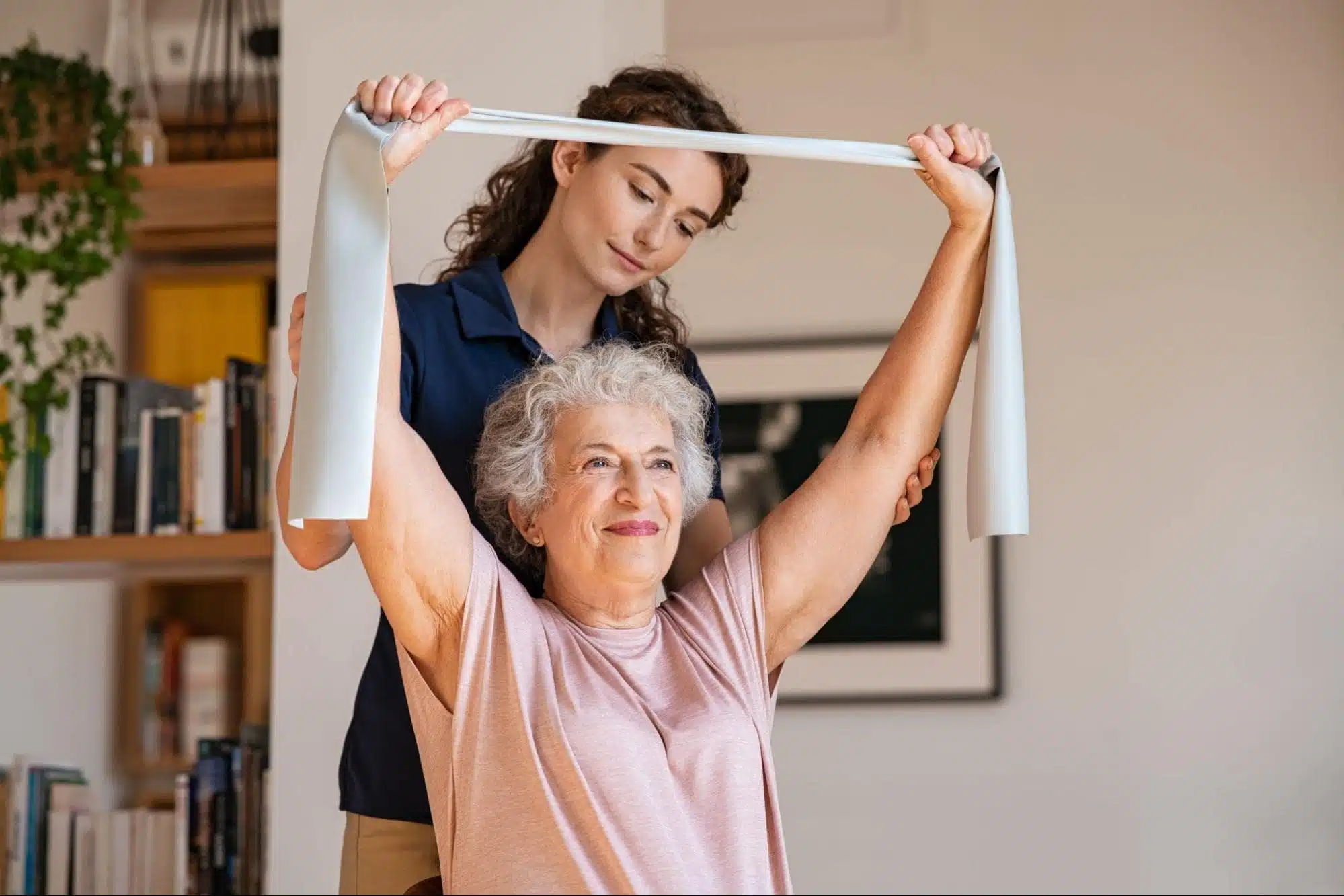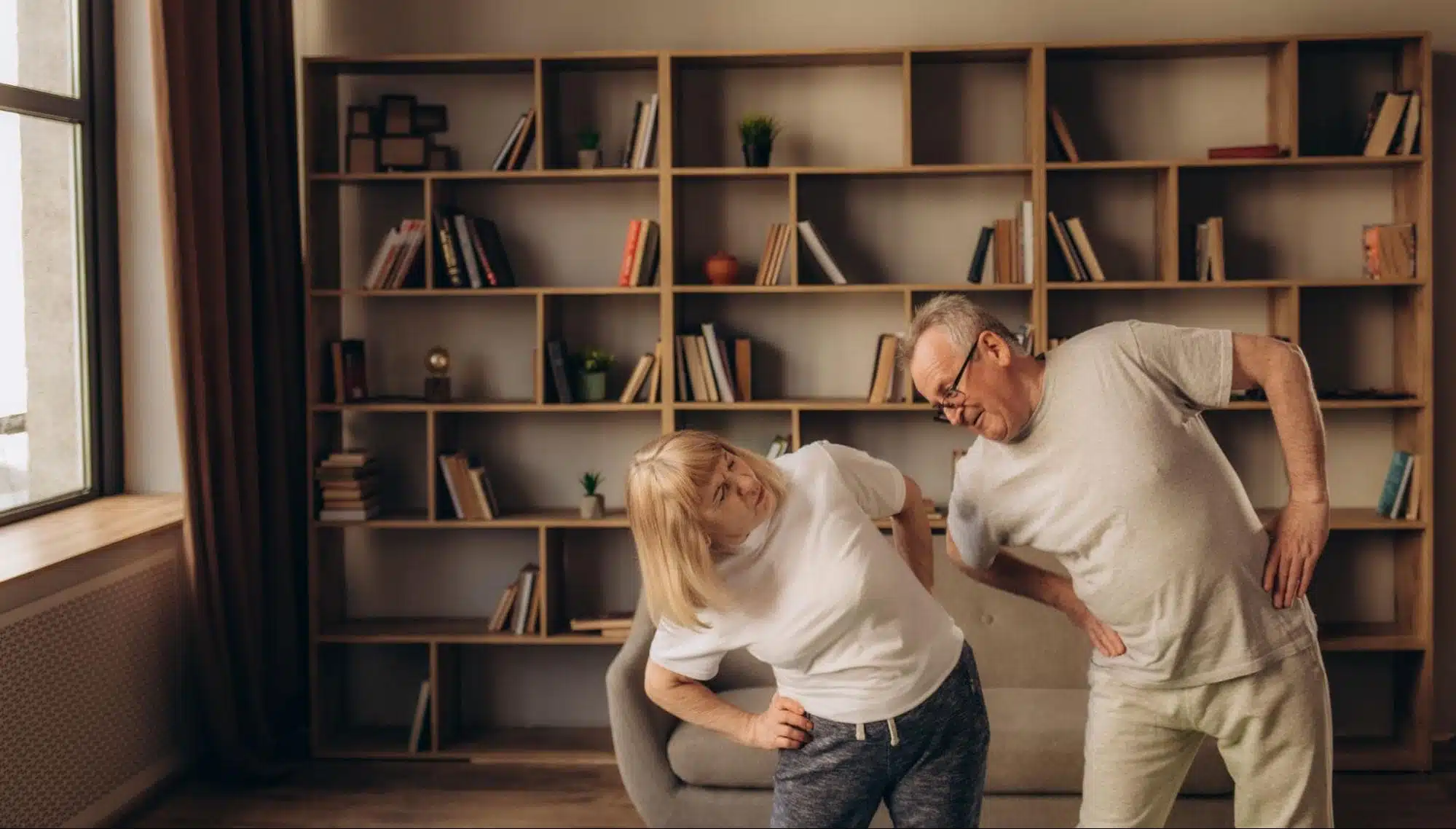Maintaining an active lifestyle is vital for seniors’ overall health, especially for managing joint pain. While some exercises may seem too challenging or painful, low-impact activities provide a safe and effective way to stay active. These exercises reduce joint strain, improve mobility, and help seniors maintain their independence and quality of life.
Disclaimer: This information is not intended as a substitute for professional consultation, diagnosis, or treatment; it is provided “as is” without any representations or warranties, express or implied. Always consult a healthcare provider if you have specific questions about any medical matter, and seek professional attention immediately if you think you or someone in your care may be experiencing a healthcare condition or medical emergency.
Benefits of Low-Impact Exercises for Seniors
Incorporating low-impact exercises into a daily routine offers numerous advantages for seniors coping with joint pain:
- Reduced joint strain: Low-impact activities avoid harsh, jarring movements that aggravate joint pain.
- Improved flexibility and mobility: Gentle movements help keep joints limber, reducing stiffness and improving range of motion.
- Enhanced strength and balance: Stronger muscles and better balance can significantly reduce the risk of falls and injuries.
- Boosted mental health: Exercise encourages endorphin release, improving mood and reducing stress.
Research highlights the importance of staying active, even for seniors with arthritis or chronic joint conditions. Studies like those found on ResearchGate emphasize that regular, low-impact activity can ease pain and improve functional ability (Effect of Alternative Low-Impact Physical Activity on Older Adults).
Water-Based Exercises
Water-based exercises are ideal for seniors with joint pain due to the buoyancy of water, which reduces joint stress while supporting the body.
- Water aerobics: Gentle aerobic routines in a pool improve cardiovascular health while strengthening muscles with minimal discomfort.
- Swimming: Provides a low-resistance, full-body workout that’s easy on the joints.
- Walking in water: This activity improves lower-body strength, balance, and endurance without impact.
An integrative review published in Geriatric Nursing titled “The psychological effects of water-based exercise in older adults” highlights how aquatic exercise alleviates pain and improves mobility in older adults, particularly those managing arthritis. Pool-based activities offer physical and mental relief, making them an excellent choice for seniors looking to stay active.
For added confidence in the pool or on the go, Lifeline’s On the Go Smartwatch ensures immediate access to assistance, providing security even during aquatic activities.
Gentle Stretching
Stretching exercises improve flexibility and reduce stiffness, making everyday tasks easier for seniors. By loosening tight muscles and joints, stretching supports mobility and relaxation.
- Yoga: Modified yoga poses, including chair yoga, focus on gentle movements that improve flexibility, balance, and relaxation.
- Tai Chi: Slow, deliberate movements in Tai Chi enhance balance, coordination, and mental focus.
- Dynamic stretches: Gentle stretches involving controlled motion, such as arm circles and ankle rolls, prepare muscles for activity.
The Mayo Clinic underscores the importance of stretching to prevent stiffness and maintain musculoskeletal health as we age. Even short, regular stretching routines can have long-lasting benefits for seniors dealing with joint pain.
For more tips and guidance, check out our Flexibility Exercises for Seniors blog post.
Low-Impact Cardio
Low-impact cardiovascular exercises promote heart health while minimizing joint stress. These activities improve endurance, circulation, and overall fitness.
- Walking: Walking is adaptable to all fitness levels, and using walking poles can offer additional stability and support.
- Cycling: Stationary and recumbent bikes provide effective cardio workouts while keeping weight off the joints.
- Elliptical machines: A smoother alternative to treadmills, ellipticals reduce joint strain while enhancing cardiovascular endurance.
Combining physical activity with safety can boost seniors’ confidence during outdoor walks, cycling sessions, or other cardio routines. Lifeline’s On the Go mobile system ensures immediate access to help if needed, offering a reliable companion for seniors looking to maintain their independence while staying active.
Strengthening Exercises
Strengthening exercises build muscle to support joints, reducing discomfort and improving overall stability. These exercises can be adapted to meet varying ability levels and provide meaningful benefits for seniors experiencing joint pain.
- Resistance bands: Lightweight and versatile, resistance bands target different muscle groups without placing additional stress on joints.
- Chair exercises: Seated movements, such as leg lifts, bicep curls, or seated marching, are safe and effective for building strength without requiring standing.
- Bodyweight exercises: Modified wall push-ups or gentle wall sits help improve muscle strength and stability while minimizing strain.
Research published in the American Journal of Preventive Medicine emphasizes the significant role of strength training in combating age-related muscle loss, known as sarcopenia. The study highlights that strength training, when performed regularly (2 to 3 times per week), can:
- Build muscle strength and mass,
- Preserve bone density,
- Reduce the risk of osteoporosis,
- Improve symptoms of chronic conditions like heart disease, arthritis, and type 2 diabetes,
- Enhance sleep quality and alleviate symptoms of depression.
The research article further concludes that strength training programs—whether supervised or home-based—provide measurable improvements in functional independence and vitality in older adults. By incorporating safe and adaptable exercises into a routine, seniors can maintain their health, reduce frailty, and minimize the risk of falls and disability.
Tips for Getting Started
Beginning a new exercise routine can feel intimidating, particularly for seniors managing joint pain. These tips offer a simple, safe approach to staying active:
- Consult a healthcare provider or physiotherapist to choose appropriate exercises.
- Start with short sessions, gradually increasing duration and intensity.
- Focus on proper form to avoid unnecessary strain on joints.
- Listen to your body—modify movements or rest if discomfort arises.
- Stay consistent to see long-term improvements in strength, mobility, and overall health.
Whether exercising at home or outside, having access to support—like Lifeline’s fall detection technology—can make starting a new routine easier and safer.
Moving Forward with Confidence
Low-impact exercises open a pathway to improved mobility, strength, and overall quality of life for seniors dealing with joint pain. By incorporating activities like water exercises, stretching, cardio, and strengthening movements, seniors can enjoy the benefits of staying active without unnecessary strain.
With medical alert devices offered by Lifeline Canada, seniors can focus on staying active while knowing help is always within reach. Stay confident, stay active, and take charge of your health—one low-impact step at a time. Connect with us today to learn more.
What You Should Do Now:
Here are 5 ways we can help you or your loved one live safer and more independently at home as long as possible:
- Get our latest tips, tools and resources straight to your inbox. Sign up for our monthly newsletter.
- Not sure if the time is right for a medical alert service? Take this quick assessment to find out.
- If you would like to learn how to live a healthier and safer lifestyle, go to our blog or visit our resources section, where you can read and download guides.
- Wondering which medical alert system company is the best for your needs? We’ve put together a guide comparing the best medical alert systems for you.



